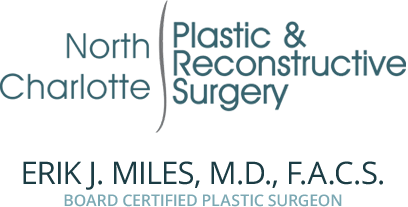What’s the difference between a deep plane facelift and a SMAS facelift?
What’s the difference between a deep plane facelift and a SMAS facelift?
Deep plane facelift greater Charlotte area
Although we have many effective nonsurgical techniques for facial rejuvenation, a surgical facelift offers the most dramatic anti-aging results possible. A facelift can address deep wrinkles and grooves along with sagging or drooping tissues, bringing the face back to a more youthful version of its appearance.
Like other surgical procedures, facelifts are highly personalized. There are a few different types of facelift available, which can be used in different situations. Recently, many people have been asking us about the deep plane facelift. What is a deep plane facelift? How is it different from other types of facelift? How do you know which type is right for you?
What is the SMAS of the face?
To understand the deep plane facelift, we first need to consider some aspects of facial anatomy. This will help to explain the specific tissues that are addressed by different types of facelift.
A structure called the superficial musculoaponeurotic system, or SMAS, is a layer of muscles and connective tissue that provides structure to the face. Above the SMAS, there’s skin and a layer of fat tissue. Below the SMAS, there are fat pads and muscles, with bones below that.
To keep the SMAS in place, it’s anchored to the bone below and to the skin above by a series of ligaments known as the retaining ligaments. There are several of these, and they’re generally found along a line between the corner of the jaw and the corner of the eye. These ligaments act to tether the SMAS.
What happens during a SMAS facelift?
A traditional facelift is also known as a SMAS facelift. This type of procedure is targeted at the SMAS, as well as the tissues overlying it (such as skin). During the aging process, as the structural protein collagen is gradually lost in tissues throughout the body, the SMAS becomes less able to resist the effects of gravity and starts to sag.
During a facelift, excess tissue from the SMAS as well as the overlying skin is trimmed away, and the remaining tissue is tightened. This helps to address the visible signs of aging, such as deep wrinkles and grooves as well as sagging or drooping tissues. The result is a facial appearance that’s smoother and tighter.
However, during a traditional facelift, the retaining ligaments are not released. The SMAS remains tethered into place by these ligaments. This limits the ability of a traditional facelift to impact tissues that are beyond the point where the ligaments are located. Because the retaining ligaments are connected to the bones of the face, the SMAS can’t be moved much beyond this point.
How is a deep plane facelift different?
During a deep plane facelift, the retaining ligaments are released. Because the SMAS is now able to be moved relative to the bones beneath it, releasing the ligaments allows the surgeon to tighten and lift the entire SMAS more effectively. This allows them to address issues like jowls and deep grooves around the mouth, which are harder to address during a traditional (SMAS) facelift.
In addition, releasing the ligaments gives better access to the tissues beneath it. Although skin and connective tissue tend to be the most affected by gravity, muscles change over time, too. By releasing the retaining ligaments, the surgeon is better able to reposition and reshape the muscles, bringing them back to a more youthful position. This allows them to create results like higher cheekbones and a more defined jawline, which are harder to achieve with a SMAS facelift.
Deep plane facelift greater Charlotte area
Overall, a deep plane facelift can create the most dramatic results, so it tends to be better for those who are older or who have more significant concerns about their facial appearance. It’s also preferred for those who want to address issues like deep grooves around the mouth, which are difficult to address with a SMAS facelift.
By contrast, a SMAS facelift may work well for those who are younger, or who have more limited concerns about their appearance. There are also nonsurgical options, which can work well for addressing certain issues, but can’t offer the more dramatic results of a facelift.
To learn more about your facial rejuvenation options and which one would be the most likely to offer the results that you’re looking for, you’ll need a consultation with a qualified plastic surgeon. If you’re in the greater Charlotte area, or are willing to travel here, we invite you to schedule an appointment with Dr. Miles. As a double-boarded plastic surgeon, he has the extensive training and experience necessary to get fantastic results for his patients. To schedule your appointment, simply contact our front desk.


